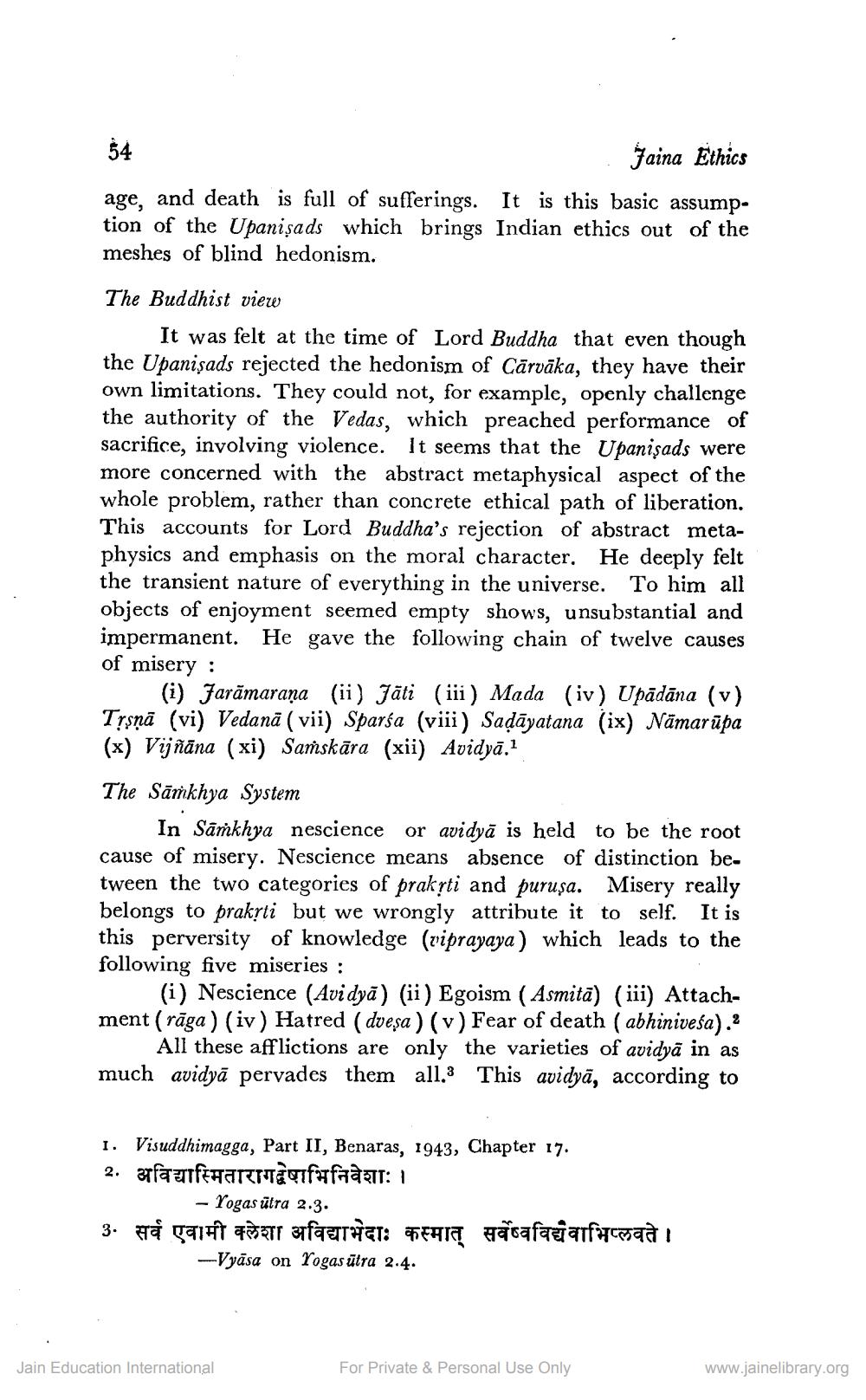________________
Faina Ethics age, and death is full of sufferings. It is this basic assumption of the Upanișads which brings Indian ethics out of the meshes of blind hedonism. The Buddhist view
It was felt at the time of Lord Buddha that even though the Upanişads rejected the hedonism of Cārvāka, they have their own limitations. They could not, for example, openly challenge the authority of the Vedas, which preached performance of sacrifice, involving violence. It seems that the Upanişads were more concerned with the abstract metaphysical aspect of the whole problem, rather than concrete ethical path of liberation. This accounts for Lord Buddha's rejection of abstract metaphysics and emphasis on the moral character. He deeply felt the transient nature of everything in the universe. To him all objects of enjoyment seemed empty shows, unsubstantial and impermanent. He gave the following chain of twelve causes of misery :
(i) Jarāmaraņa (ii) Jāti (iii) Mada (iv) Upādāna (v) Trşņā (vi) Vedanā (vii) Sparśa (viii) Sadāyatana (ix) Nämarūpa (x) Vijñāna (xi) Saṁskāra (xii) Avidyā.? The Sārkhya System
In Sāṁkhya nescience or avidyā is held to be the root cause of misery. Nescience means absence of distinction between the two categories of prakrti and puruṣa. Misery really belongs to prakrti but we wrongly attribute it to self. It is this perversity of knowledge (viprayaya) which leads to the following five miseries :
(i) Nescience (Avi dyā) (ii) Egoism ( Asmitā) (iii) Attachment (rāga) (iv) Hatred ( dveșa ) (v) Fear of death ( abhiniveśa).
All these afflictions are only the varieties of avidyā in as much avidyā pervades them all.3 This avidyā, according to
1. Visuddhimagga, Part II, Benaras, 1943, Chapter 17. 2. अविद्यास्मितारागद्वेषाभिनिवेशाः ।
– Yogas ūtra 2.3. 3. सर्व एवामी क्लेशा अविद्याभेदाः कस्मात् सर्वेष्वविद्यवाभिप्लवते।
--Vyāsa on Yogas ātra 2.4.
Jain Education International
For Private & Personal Use Only
www.jainelibrary.org




